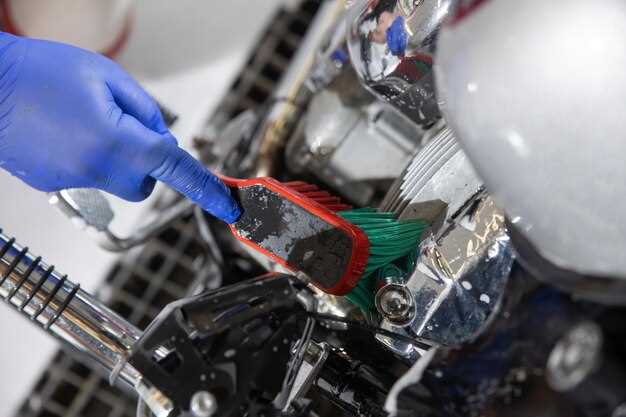
Cleaning the engine bay is an essential maintenance task that many car enthusiasts often overlook. A clean engine bay not only enhances the overall appearance of your vehicle but also allows you to identify potential leaks and other issues more easily. However, improper cleaning techniques can lead to damage and costly repairs. Therefore, it is crucial to understand the best practices for safely cleaning your engine bay without causing harm to any components.
When it comes to cleaning the engine bay, the process involves several steps that require attention to detail. First, it is important to gather the necessary materials and tools to ensure an effective clean. This includes appropriate cleaning agents, brushes, and protective gear. Additionally, knowing how to cover sensitive parts, such as electrical components and air intakes, is vital in preventing water or cleaning solutions from interfering with the engine’s functionality.
In this article, we will explore various methods and tips for cleaning your engine bay safely. We will discuss the importance of choosing the right cleaning products, the techniques that minimize the risk of damage, and the suggested frequency of cleaning. By following these guidelines, you can maintain a spotless engine bay while extending the life of your vehicle’s components.
Choosing the Right Cleaning Products for Engine Bays
Selecting the appropriate cleaning products for engine bays is crucial to ensure effective cleaning without causing damage. Engine compartments often accumulate grease, dirt, and other debris, which can be challenging to remove without the right solutions.
First, consider using biodegradable degreasers that are safe for various engine materials. These products help break down grime without harsh chemicals that could corrode or harm sensitive components. Make sure to check the label for compatibility with plastics, rubber, and other materials commonly found in the engine bay.
Additionally, pH-balanced cleaners are ideal as they maintain neutrality, preventing damage to painted surfaces and seals. Acidic or highly alkaline cleaners may damage the engine’s finish or cause discoloration over time.
Look for products specifically designed for automotive use. Many manufacturers offer cleaners formulated to tackle stubborn stains and residue found in engine compartments. These specialty cleaners are often more effective than general-purpose cleaning agents.
Don’t overlook the importance of safety. Opt for products that are non-toxic and safe for both the user and the environment. This approach minimizes health risks and ensures safety while cleaning.
Finally, follow the manufacturer’s instructions for dilution ratios and application methods. Using products as directed will maximize their effectiveness and reduce the risk of damage during the cleaning process.
Step-by-Step Process to Safely Clean Your Engine Bay

Cleaning your engine bay can enhance your vehicle’s appearance and make inspections easier. However, it is crucial to follow a systematic approach to avoid damage. Here’s a detailed step-by-step process.
Step 1: Gather Materials
Before you start, collect all necessary supplies, including:
- Protective gloves and goggles
- Plastic bags or covers
- Engine degreaser
- Soft-bristle brush
- Water source (hose or spray bottle)
- Microfiber cloths
Step 2: Prepare the Vehicle
Ensure your engine is cool to the touch. Disconnect the battery by removing the negative terminal to prevent any electrical issues. Use plastic bags to cover sensitive components such as the air intake, electrical connections, and fuse box. This protects them from moisture.
Step 3: Apply Degreaser
Generously spray the engine degreaser onto the dirty surfaces of your engine bay. Focus on areas with heavy grease buildup. Allow the degreaser to sit for 10-15 minutes to break down contaminants.
Step 4: Agitate and Scrub
Using a soft-bristle brush, gently scrub the engine surfaces. This helps to lift dirt and grease without damaging components. Pay attention to crevices and hard-to-reach areas, ensuring thorough cleaning.
Step 5: Rinse Thoroughly
With a low-pressure water source, carefully rinse the engine bay. Avoid using a pressure washer, as it can dislodge components or force water into electronic parts. Ensure all degreaser residue is removed to prevent buildup.
Step 6: Dry the Engine Bay
Use microfiber cloths to dry the surfaces within the engine bay. This prevents water spots and helps to reduce moisture buildup, which can lead to corrosion. Make sure to dry areas around electrical components and connectors carefully.
Step 7: Reconnect the Battery
Once everything is dry, remove the plastic coverings. Reconnect the battery by attaching the negative terminal securely.
Step 8: Final Inspection
Conduct a final check to ensure everything is in place and that there are no loose connections. Start the engine and allow it to run for a few minutes while checking for any unusual sounds or warning lights.
Following this step-by-step process will help you safely clean your engine bay without causing damage while maintaining its appearance and functionality.
Protecting Engine Components During the Cleaning Process

Cleaning an engine bay can significantly enhance your vehicle’s appearance and performance, but it is essential to protect sensitive engine components during this process. Here are key steps to ensure the safety of your engine while cleaning:
- Identify Sensitive Components: Before starting, take time to identify electrical connections, sensors, and exposed components that may be vulnerable to water or cleaning products.
- Cover Electrical Connections: Use plastic bags or cling film to cover battery terminals, electrical connectors, and sensitive sensors to prevent moisture damage.
- Seal Air Intake: Block the air intake to prevent water from entering the engine’s combustion chamber. This can be done using a plastic bag or similar material.
- Avoid High Pressure: When using a pressure washer, maintain a safe distance from engine components. High pressure can force water into areas where it could cause damage.
- Use Appropriate Products: Select engine cleaning products that are safe for various materials, including rubber, plastic, and metal. Avoid harsh chemicals that could degrade these components.
By following these protective measures, you can effectively clean your engine bay without risking damage to important engine components.




